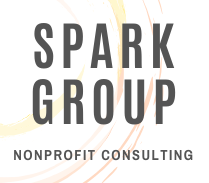How to Prepare for Your Next Strategic Planning Process
Nonprofit organizations often find themselves at different points along the organizational life cycle. Whether you're in a phase of growth and maturity, facing challenges and decline, or embarking on a journey of rebirth and reinvention, strategic planning is the compass that guides you through these transitions. In this blog, we'll explore the importance of understanding your organization's position within the life cycle and outline three key steps to prepare for your upcoming strategic planning process.
Understanding Your Organizational Life Cycle
Every nonprofit organization evolves through distinct stages in its life cycle:
1. Growth & Maturity: This phase represents a period of expansion, success, and stability. Your organization's mission and programs are well-established, and you're searching for ways to continue increasing your impact.
2. Decline: The decline phase is characterized by challenges such as reduced funding, resource shortages, or diminishing effectiveness. It's a pivotal moment to evaluate your strategies and reinvigorate your organization.
3. Rebirth: Significant changes, whether triggered by external factors or shifts in leadership, mark the rebirth phase. In this stage, you're reinventing your organization to meet new challenges and seize fresh opportunities.
Understanding where your nonprofit falls within this spectrum is the foundation for developing effective strategic goals. Once you have that insight, you will be better informed to move forward with your planning process.
The Best Way to Prepare
As you gear up for your next strategic planning process, keep these essential steps in mind:
1. Develop a Strategic Mindset: Foster a strategic mindset within your team. Encourage the evaluation of existing programs and the setting of long-term goals. Regardless of your organization's life cycle stage, this mindset is the cornerstone of effective strategic planning.
2. Embrace Transparency: Open communication is key. Be transparent about the planning process, including who will be involved, how feedback will be gathered, and the desired outcomes. This transparency fosters trust and buy-in from all stakeholders.
3. Prioritize Intentionality: Ensure your planning process is comprehensive and grounded in best practices. Consider enlisting the expertise of a consultant, such as Spark Group Consulting, or conduct thorough research to inform your strategy effectively. Being intentional about your approach ensures that your strategic planning efforts are meaningful and impactful.
Navigating your nonprofit's organizational life cycle requires adaptability, foresight, and a commitment to strategic planning. By understanding where you are on the growth, decline, or rebirth continuum, you can chart a course for success. Developing a strategic mindset, practicing transparency, and approaching the process with intentionality are the keys to preparing for your next strategic planning journey. With these tools in hand, your nonprofit will be well-equipped to thrive in the ever-changing landscape of the nonprofit sector, ultimately making a more profound impact on your community.
If you are looking for a facilitator for your next strategic planning process, contact Spark Group today!




